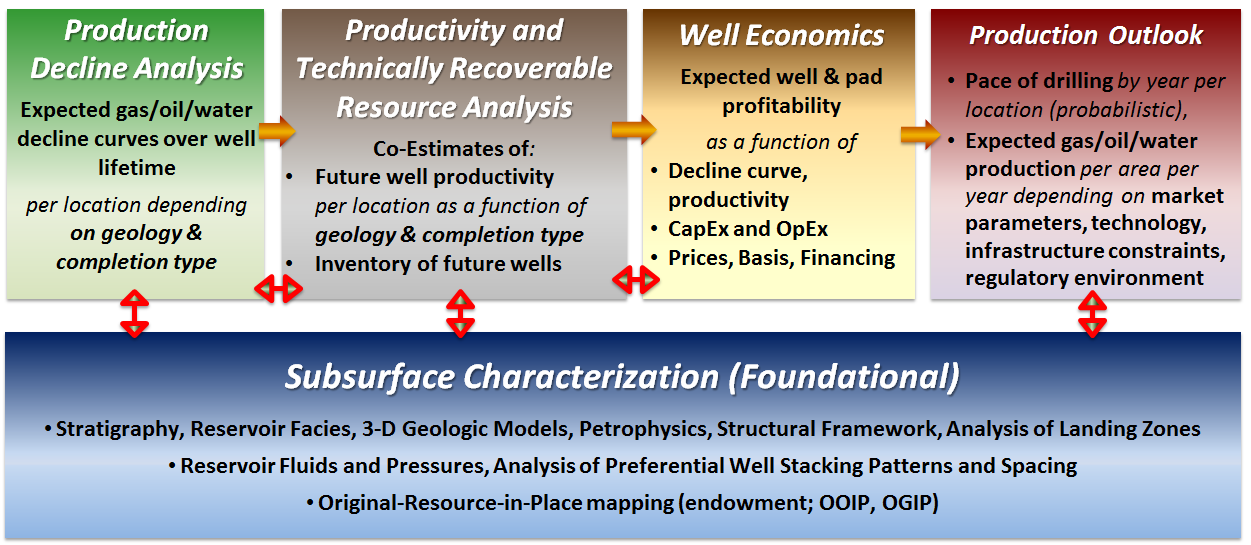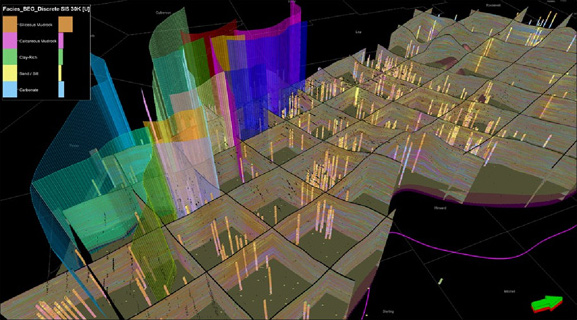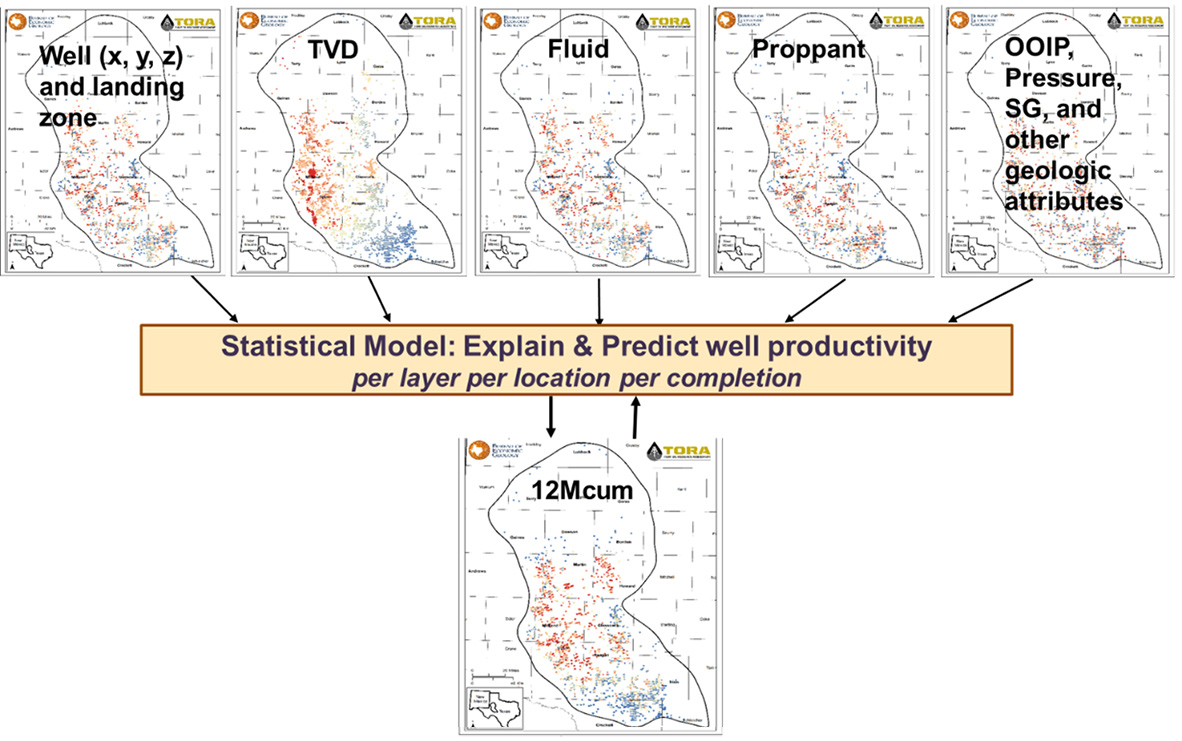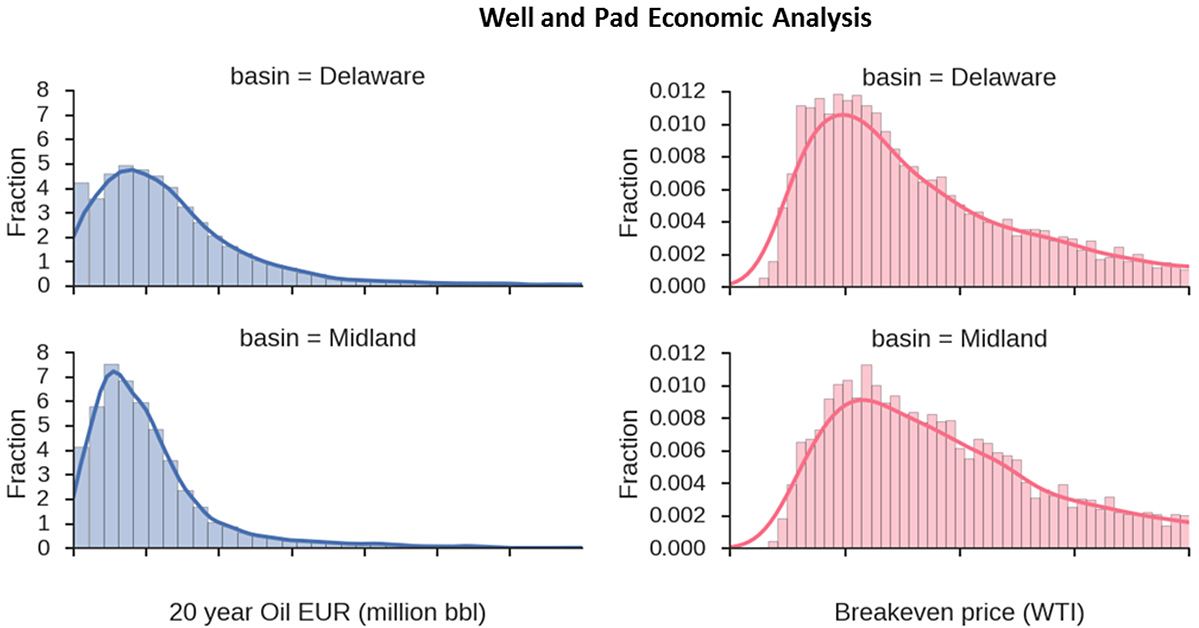Methodology
Research Thrusts
The TORA multidisciplinary team employs a bottom-up, highly iterative resource-evaluation process. The TORA research model allows team members from different disciplines to share information and inform study results. Team members are experts in their respective fields, which include:
- Geology and Petrophysics
- Petroleum and Reservoir Engineering
- Energy Economics
- Data Analytics and Machine Learning
- ARC GIS systems
Workflow

The key research questions we are investigating include:
- What is the original resource in place (original gas and oil endowment)?
- What are the key subsurface and operational practice controls on per well productivity?
- What portion of this resource is technically recoverable utilizing current and likely future technologies?
- What portion of the resource is economically recoverable given specific technology and economic assumptions?
- What are the short-term and long-term production outlooks under various energy prices, costs, technology, regulations?
Approach

Midland Basin 5-facies well logs and distribution with fault interpretation.
TORA employs a multidisciplinary and highly iterative resource-evaluation process. This bottom-up approach was developed and refined in a series of Sloan- and DOE-funded studies on several major shale-resource plays. The Permian Basin process includes the following disciplines:
- Geology and petrophysics: We interpret the stratigraphic framework using digital well-log correlation and core descriptions, resulting in a basinwide 3D facies architecture used to guide petrophysical-attribute distribution. This framework is also used to calculate resource-in-place using both deterministic and stochastic scenario analysis.
- Engineering: We model and match each well-production history before projecting future production. We perform decline analysis using innovative, physics-based in-house software. We use volumetric and machine learning approaches, integrated with geology, to determine the drainage volume and optimized spacing for wells.
- Data Analytics: We relate the productivity (per horizontal foot) of existing wells to key subsurface and operational attributes and utilize this information to model the productivity of all undrilled locations.
- Economics: We develop the full range of expected production outcomes per well, technological and cost improvements, commodity prices, basis differentials (logistics), pace of drilling, well attrition, lease accessibility, among others.
- ARC-GIS: Digital mapping to, for example, spatially link key geologic and operational practices to the productivity of each current and future well location

- Statistical data analysis: We develop statistical algorithms combining various machine learning techniques to reveal relationships in the comprehensive database resulting from the previous steps of the analysis.


Scope
TORA studies tight oil formations including the Spraberry, Wolfcamp A, B, C, D, Bone Spring, Eagle Ford and others, relying on our comprehensive well, stratigraphic, petrophysical, fluid properties data base and analysis as a foundation to developing a view of resource distribution and future recovery. Our goal is to produce unbiased, comprehensive and publicly available results. What makes TORA unique is the basin-scale scope of investigation but with predictions of productivity, profitability, and future drilling at a 1 sq. mile scale.